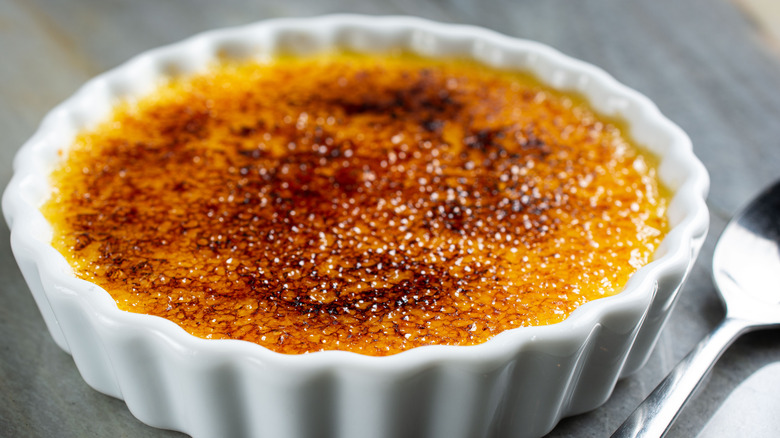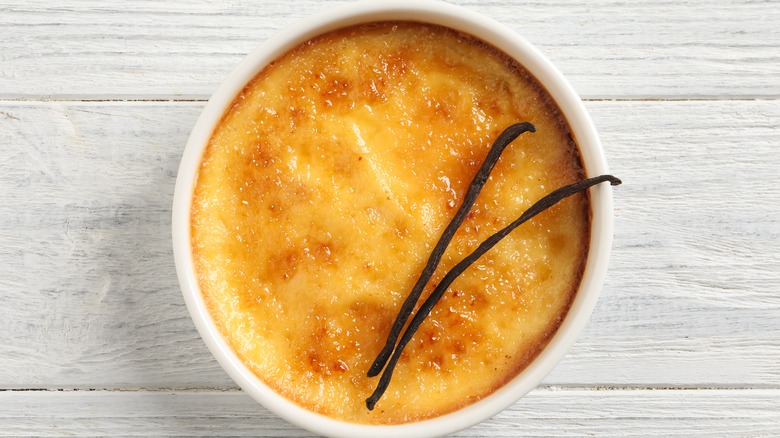How To Finish Crème Brûlée Without A Torch, According To Gordon Ramsay
When it comes to dessert, nothing is quite as spectacular and special as crème brûlée. Even the name itself indicates a more royal and exquisite taste and appearance, making it all that more appetizing when it comes up on a dessert menu.
With the name literally translating to "burnt cream" in French, the dessert's origins are a little murky. According to PJP Online, France, England, and Spain all claim to have been the first country to create and perfect crème brûlée. However, it seems like the first true recipe dates back to England in the 15th century, boasting a sweet custard with a burnt layer of sugar on top.
Today, both professional chefs around the world and amateur cooks in the kitchen can enjoy this decadent dessert with a matter of some patience and a torch. You can even make homemade crème brûlée in a pressure cooker, or opt for an original take on the dessert with three-way crème brûlée. But what if you don't have a torch to finish off the toasted crispy layer of sugar on top? Thankfully, Gordon Ramsay tells us how to finish off the dessert using another fire technique.
How to finish crème brûlée without a torch
If you find yourself patiently and carefully crafting your crème brûlée at home, but don't have a torch to achieve that crispy sugary coat on top, Gordon Ramsay is here to save the day. In a Wired video titled, "Gordon Ramsay Answers Cooking Questions From Twitter," the globally recognized chef lets crème brûlée lovers at home know how to achieve that crispy top layer without a torch.
According to Ramsay, you can take an old spoon that you don't use or care about and put it under the flame of your gas stove (if you have one). Get it really hot, and then gently stick that on the top layer of sugar. You'll find that the flame-hot metal of the spoon will instantly caramelize the top layer.
Just make sure to not get the spoon too hot. According to Ramsay, if you overheat the spoon and it's too hot, it can destroy the cream that is underneath. So better to err on the side of caution and use moderate heat and do it several times to achieve your desired crunch.
Other methods without a torch
While Gordon Ramsay's tip to achieve the crispy, caramelized top layer of your crème brûlée without a torch is good, what if you find yourself without a gas stove and flame to work with?
According to Food Network, you can also heat up a spoon over an electric stove; it just might take a little longer to get it to the right amount of heat to actually crisp the top of your crème brûlée.
Additionally, according to Hummingbird High, you can also use the broiler function on your oven to achieve that caramelized "torched" consistency. To do this, the recipe calls to bake the crème brûlée in the oven and then allow it to be refrigerated for at least four hours before "torching" and eating it. Set your oven to broil and set the crème brûlée on a rack as close as you can to the broiler — usually the highest rack placement — and preheat for 10 minutes. Then, you'll sprinkle your sugar on top of your custard dessert, broil for up to 10 minutes — or until you see a golden crisp on top — and take it out to cool for a couple of minutes to allow the caramelized sugar to harden.


